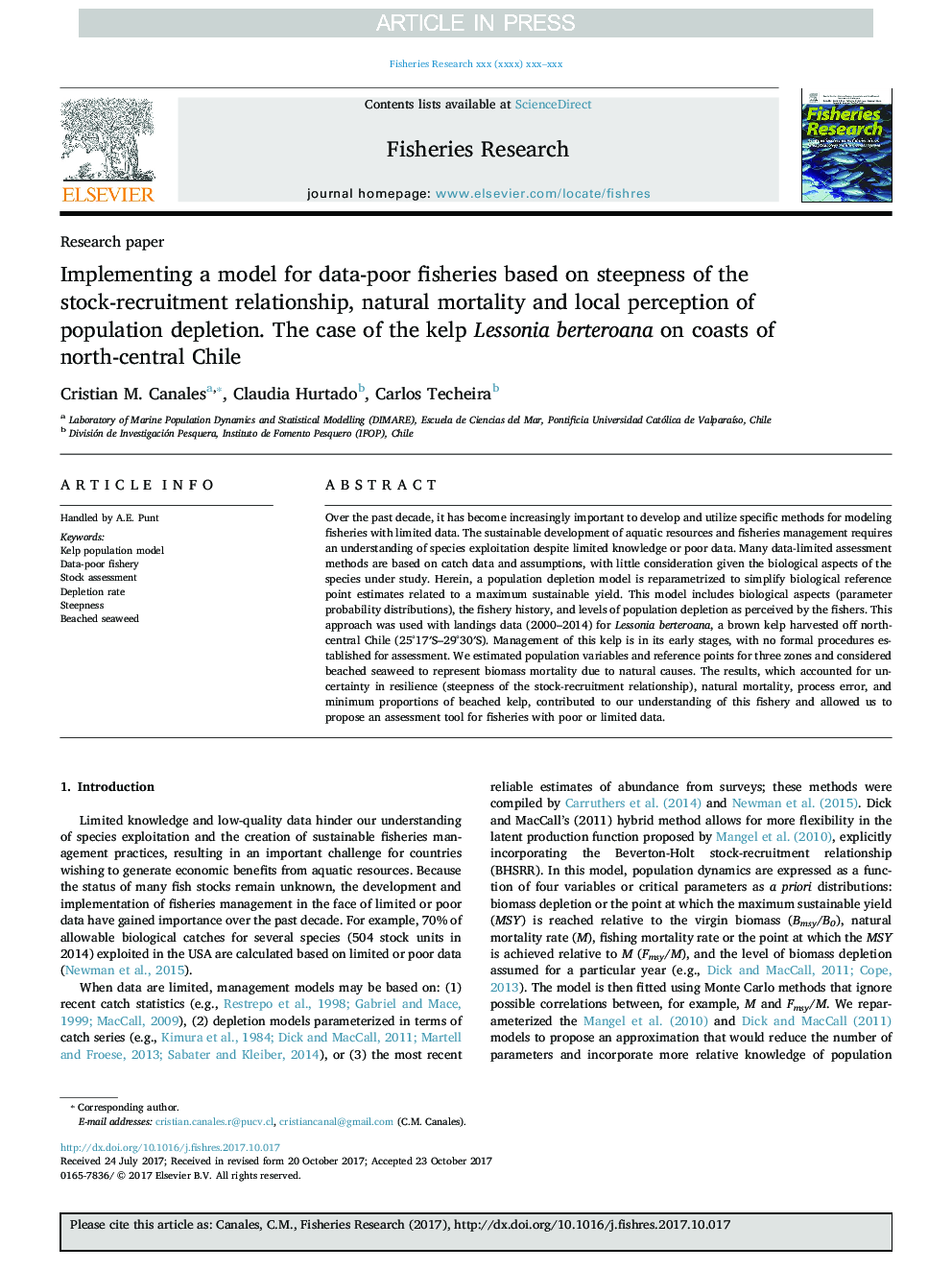| Article ID | Journal | Published Year | Pages | File Type |
|---|---|---|---|---|
| 8885592 | Fisheries Research | 2018 | 12 Pages |
Abstract
Over the past decade, it has become increasingly important to develop and utilize specific methods for modeling fisheries with limited data. The sustainable development of aquatic resources and fisheries management requires an understanding of species exploitation despite limited knowledge or poor data. Many data-limited assessment methods are based on catch data and assumptions, with little consideration given the biological aspects of the species under study. Herein, a population depletion model is reparametrized to simplify biological reference point estimates related to a maximum sustainable yield. This model includes biological aspects (parameter probability distributions), the fishery history, and levels of population depletion as perceived by the fishers. This approach was used with landings data (2000-2014) for Lessonia berteroana, a brown kelp harvested off north-central Chile (25°17â²S-29°30â²S). Management of this kelp is in its early stages, with no formal procedures established for assessment. We estimated population variables and reference points for three zones and considered beached seaweed to represent biomass mortality due to natural causes. The results, which accounted for uncertainty in resilience (steepness of the stock-recruitment relationship), natural mortality, process error, and minimum proportions of beached kelp, contributed to our understanding of this fishery and allowed us to propose an assessment tool for fisheries with poor or limited data.
Related Topics
Life Sciences
Agricultural and Biological Sciences
Aquatic Science
Authors
Cristian M. Canales, Claudia Hurtado, Carlos Techeira,
